And That's a Wrap (almost)!
Posted: June 13, 2012
We had an absolute blast in Montreal this past weekend for the annual Canadian Grand Prix! A little rain didn't hurt as we attended fashion-forward events, street parties, practice sessions and races alike (don't think we skipped out on the Montreal classics too - poutine anyone? YUM). We were also fortunate to join Juliana in all the excitement :) Check out some behind the scenes highlights below and stay tuned for the video montage to be posted soon!
What does a Formula 1 driver's diet look like?
Posted: June 9, 2012
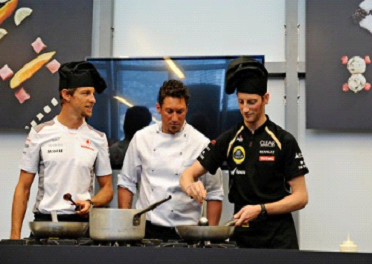
Much like each driver has their own individual style on the track, each driver's diet also requires individual tailoring. Typically, a driver will work closely with a physiotherapist, dietitian and members of their medical team to discuss eating habits, weight, and food preferences. This is followed by allergy tests to ensure the diet won't cause adverse reactions.
Gabriele Polcari, physiotherapist to the Renault F1 team and the man who oversees the diet of Heikki Kovalainen, spoke with CNN in-depth about how exactly drivers manage their diet when preparing for a race.
"The drivers need to have a diet as varied as possible," said Polcari.
One has to note that - considering a Grand Prix race is comparable to a marathon - drivers must balance a highly active lifestyle with their diets. They burn such a significant number of calories during the entirety of a race, their bodies must be able to withstand the balancing act of the demanding physical toll, as well as their caloric intake, and, of course, their ability to stay focused on the 300m/hr race.
It isn't just what's in a driver's stomach however, they must be active enough to burn off the calories they consume in their daily diet as well. Professionals agree that the notion of "smaller portions, more often" best suits the nutritional and physical requirements of a Formula 1 driver.
A typical daily meal breakdown for a driver generally entails the following:
BREAKFAST: Cereals and fruit
BREAK (10 a.m. approximately): Fruit and proteins LUNCH: Pasta and tomato sauce (not too much sauce -- avoid garlic, onions and cream in the sauce, which are too heavy) BREAK (3.30 p.m. approximately): Fruit and cereals bare (without milk) DINNER: This must be the lightest meal of the day. Meat -- or even better, fish -- served with vegetables like spinach, for example
Source: http://edition.cnn.com/2007/SPORT/05/17/f1.sizeme/
Image source: http://wheels.blogs.nytimes.com/2012/05/24/ahead-of-monaco-grand-prix-jenson-button-and-romain-grosjean-hone-knife-skills/
Top 10 Formula 1 Racers in Montreal GP
Posted: June 8, 2012
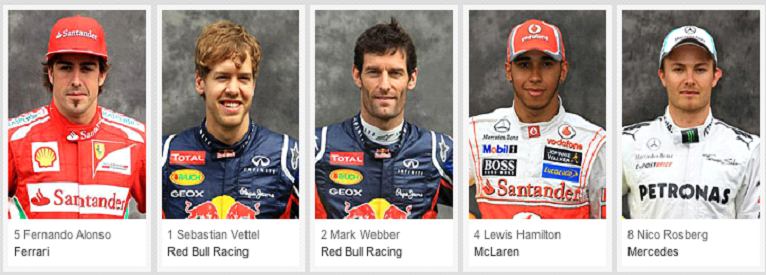
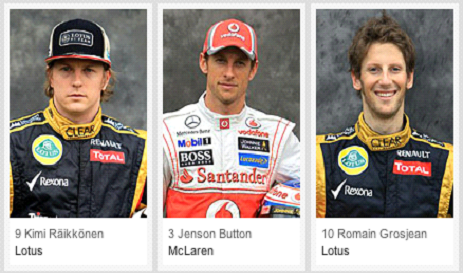
Fernando Alonso leads so far, with 76 podiums and 2 world championships!
Who will you be rooting for this weekend?
Read more at: http://www.formula1.com/teams_and_drivers/drivers/
Kanetix - Live at the Canadian Grand Prix!
Posted: June 8, 2012
We are live at the Canadian Grand Prix Formula 1 race this weekend!
Formula 1 Race Car: How does it all work?
Posted: June 7, 2012
The technology behind a Formula 1 car is state of the art. It is the pinnacle of technology. Check out this video where the Sauber F1 Team engineer dissects an actual car and shows us how it all works!
Driver Profile: Meet Fernando Alonso
Posted: June 6, 2012
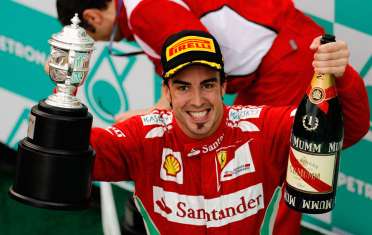
Number one in the 2012 standings, Spain's own Fernando Alonso is a two-time World Champion currently racing for Ferrari. With 76 podiums wins (ugh, wow), Alonso is a force to be reckoned with on the speedway. In 2011, the Formula 1 vet outdrove both Red Bull and McLaren scoring one win and nine podiums, missing out on third place overall by a single point. 2012 is looking to be Fernando's year, and while he has quite competition to race against in Montreal, we are excited to see if he can continue his winning trend. #winning.
Watch out for the light blue and yellow Asturias flags being waved around during the weekend festivities, these mark the impassioned Alonsomania fans - we'd imagine they would make for great seating partners and even greater drinking partners.
We want to know, which driver are you looking forward to seeing on the track?
Who is Gilles Villeneuve and why is the Circuit named after him?
Posted: June 5, 2012
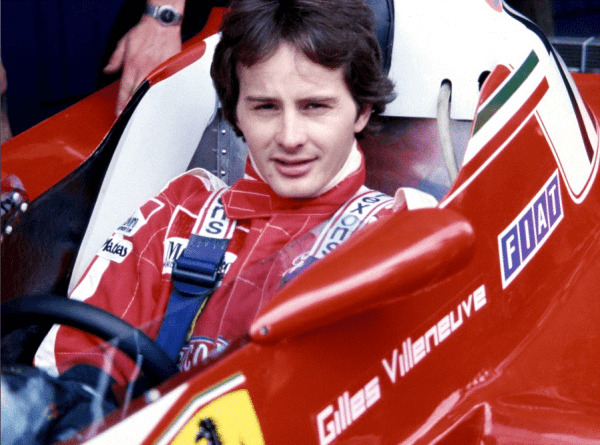
(Image via riotengine.in)
70 laps long and a circuit length of 4,361 kilometers, the Circuit Gilles Villeneuve at Montreal Grand Prix is a sight to be seen (and heard). Named after racecar royalty, Gilles Villeneuve erupted on the speedway and in three short decades became a Formula 1 and NASCAR legend. With six Grand Prix title wins before his untimely death in 1982, Villeneuve was a man who conquered all and feared nothing. That same year, his legacy was ingrained into the hearts and minds of racecar enthusiasts (and the Canadian cultural fabric) with the naming of the Canadian Grand Prix and NASCAR circuit in his honor.
We want to know - who was Gilles Villeneuve to you? A racecar maverick? A speed demon? A Canadian sports icon?
See you on the speedway!
Learn more about this Canadian and racecar legend here:
Source: http://www.grandprix.com/gpe/drv-vilgil.html
Image source: http://bit.ly/Lgn5cdl
The History of Formula One Racing
Posted: June 4, 2012
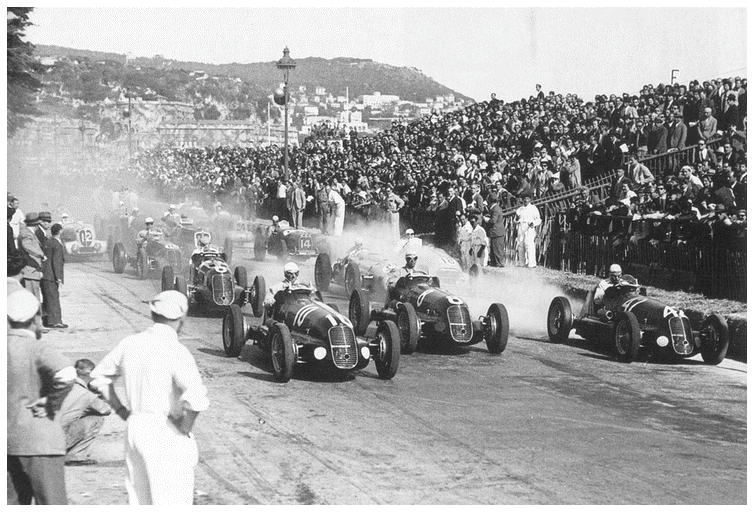
(Image via silodrome.com)
What exactly is Formula One, Formula 1 or F1? Only the highest class of 'single-seater' auto racing, involving the fastest circuit-racing cars in the world! (Note: 'Formula' refers to a set of rules in which all participants and cars must comply). We had no idea it dates back to the earliest days of motor racing in the 50's!
The Canadian Grand Prix starting in 1961. It has been part of the Formula One World Championship since 1967. It was first staged at Mosport Park in Bowmanville, Ontario as a sports car event. In 1978, after safety concerns with Mosport the Canadian Grand Prix moved to its current home on Île Notre-Dame in Montreal. In 2005, the Canadian Grand Prix was the most watched Formula One GP in the world. The race was also the third most watched sporting event worldwide.
However, it all started in 1946, the first Formula One races were held. The following year, it was decided the first drivers' championship would be held May 1950 in Silverstone, England.
Although drivers bought and raced their own cars, the Formula was dominated by major manufactures, which included: Alfa Romero, Ferrari, Maserati and Mercedez Benz (some of which still run teams today). It was Giuseppe ("Nino") Farina who won the inaugural title, but the dominate driver of the 1950's had to have been Juan Manuel Fangio, who won the championship in 1951 and for 4 consecutive years afterward with five different manufacturers!
The cars made considerable technological advances over the years, with the iconic British Racing Green Lotus having a significant influence. In 1968, this team was the first to carry advertising on their cars. Lotus continued to break ground, making faster and slicker vehicles and introducing aerodynamics that provided enormous downforce, which greatly increased cornering speeds - creating a whole new layer of excitement to Formula One racing. Lotus again reinvented itself in 1978, with the introduction of ground-effects technology, giving their cars an outstanding grip on the road.
Turbos first appeared in 1977 and driver Niki Lauda's half-point win in 1984 was the start of the 'McLaren dominance' - where they won the drivers' title seven out of eight years. In 1988, they managed to win 15 out of 16 races. However, turbos became banned the following season due to restrictions that regulated the huge power of the cars - eventually turbos were banned altogether in 1989. In the 1980's, electronic drivers aids began to emerge, and again, Lotus was leading in innovation. However, this raised issues of whether drivers were becoming increasingly less relevant with these technologically advanced cars.
Senna's dramatic death in 1994 led to considerable measures to slow the cars and improve the safety in Formula One racing. Some even argued that the race was more about the technicians and designers rather than the drivers themselves because few significant manufactures dominated. McLaren, Williams, Renault (formerly Benetton) and Ferrari won every World Championship from 1984 until 2008. The soaring costs of Formula One also widened the gap between the big four and the smaller independents. The most dominant figures during this time were Michael Schumacher and Ferrari, who won five consecutive drivers' championships and six consecutive constructors' championships between 1999 and 2004. Championship rules were frequently changed by the FIA with the intention of improving the on-track action and cutting costs. From 2000 onwards, manufacture-owned teams still continued to dominate. The Grand Prix Manufactures Association (GPMA) negotiated a larger share of Formula One's commercial profit and a greater influence in running the sport. Formula 1 continues to see a global expansion, with new races in lucrative markets in the far and Middle East.
Today, 24 drivers compete among 12 teams worldwide, bringing in audiences in excess of 500 million unique viewers annually!
Who are you rooting for?
Source: http://en.espnf1.com/f1/motorsport/story/3831.html
http://www.formula1.com/news/headlines/2011/1/11634.html
Image source: http://silodrome.com/the-first-ever-formula-1-race-nice-1946/




